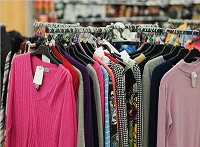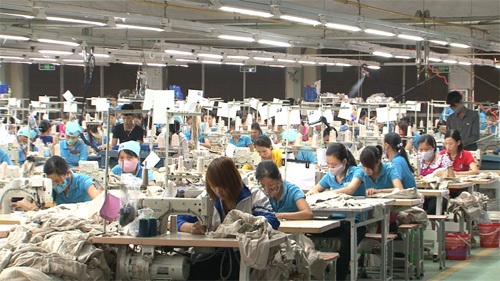"With growing preference for ‘Made in America’ products, US textile and apparel exports increased by 0.9 per cent to $5,776.88 million from January to March 2019. Apparels exports during this period increased 5.04 per cent compared to the same quarter of 2018. Within these, export of functional apparels increased by 14.4 per cent to $401.05 million, while exports of other products including sports apparels, knitted apparels, sweaters and coats also recorded high growth."
 With growing preference for ‘Made in America’ products, US textile and apparel exports increased by 0.9 per cent to $5,776.88 million from January to March 2019. Apparels exports during this period increased 5.04 per cent compared to the same quarter of 2018. Within these, export of functional apparels increased by 14.4 per cent to $401.05 million, while exports of other products including sports apparels, knitted apparels, sweaters and coats also recorded high growth.
With growing preference for ‘Made in America’ products, US textile and apparel exports increased by 0.9 per cent to $5,776.88 million from January to March 2019. Apparels exports during this period increased 5.04 per cent compared to the same quarter of 2018. Within these, export of functional apparels increased by 14.4 per cent to $401.05 million, while exports of other products including sports apparels, knitted apparels, sweaters and coats also recorded high growth.
A growing market for the US apparel, China accounts for 2.32 per cent of total US apparel exports. Other important markets for US apparel exports are: Italy, Ukraine, Saudi Arabia, Colombia and Peru. Countries including Thailand, Sri Lanka, and many African countries are other growing US export markets.
Short lead times, advanced technology favor western countries
A recent report on the apparel industry shows, nearshoring will be a reality by 2025 with more clothes being made in the US and nearby countries. Though higher production costs in the western markets are still an obstacle, McKinsey reveals cheaper freight and lower duties make it less expensive for companies to produce their goods in western countries like Mexico than in China for the US market.
made in the US and nearby countries. Though higher production costs in the western markets are still an obstacle, McKinsey reveals cheaper freight and lower duties make it less expensive for companies to produce their goods in western countries like Mexico than in China for the US market.
Companies can also compensate for some of their labor cost disadvantage by shortening their lead times and increasing the share of clothes sold at full price. Automation decreases production costs. For instance, sewing a pair of jeans takes an average of 19 minutes. However, as McKinsey and RWTH Aachen note, robots can reduce this time by 40-90 per cent. Another important technology is the one used to create distressed jeans. This technology, used by Levi’s, reduces lead time from 20 minutes to 90 seconds.
China maintains lead
McKinsey reveals that around 82 per cent of sourcing managers plan to automate their production process by 2025. If they’re right, production is coming back – but the jobs aren’t. And China isn’t likely to fritter away its current advantage even as it becomes more expensive: Chinese garment companies are building factories in cheap labour countries closer to Europe such as Ethiopia. With these caveats, it’s likely that the buyers of mass market clothes, not just expensive designer threads, will be dressing in garments from geographically closer countries soon.
With the US imposing tariffs on China from July 2018, US apparel retailers and buyers began exploring newer sourcing destinations. However, China offers a lower average UVR than many other supplying countries as its industries thrive on government subsidies and incentives even. Also, China is automating its manufacturing and supply chains to cut costs, and delivery times. The technology costs for China are much lower than other competing countries which enable it to command a better price for its apparels.












